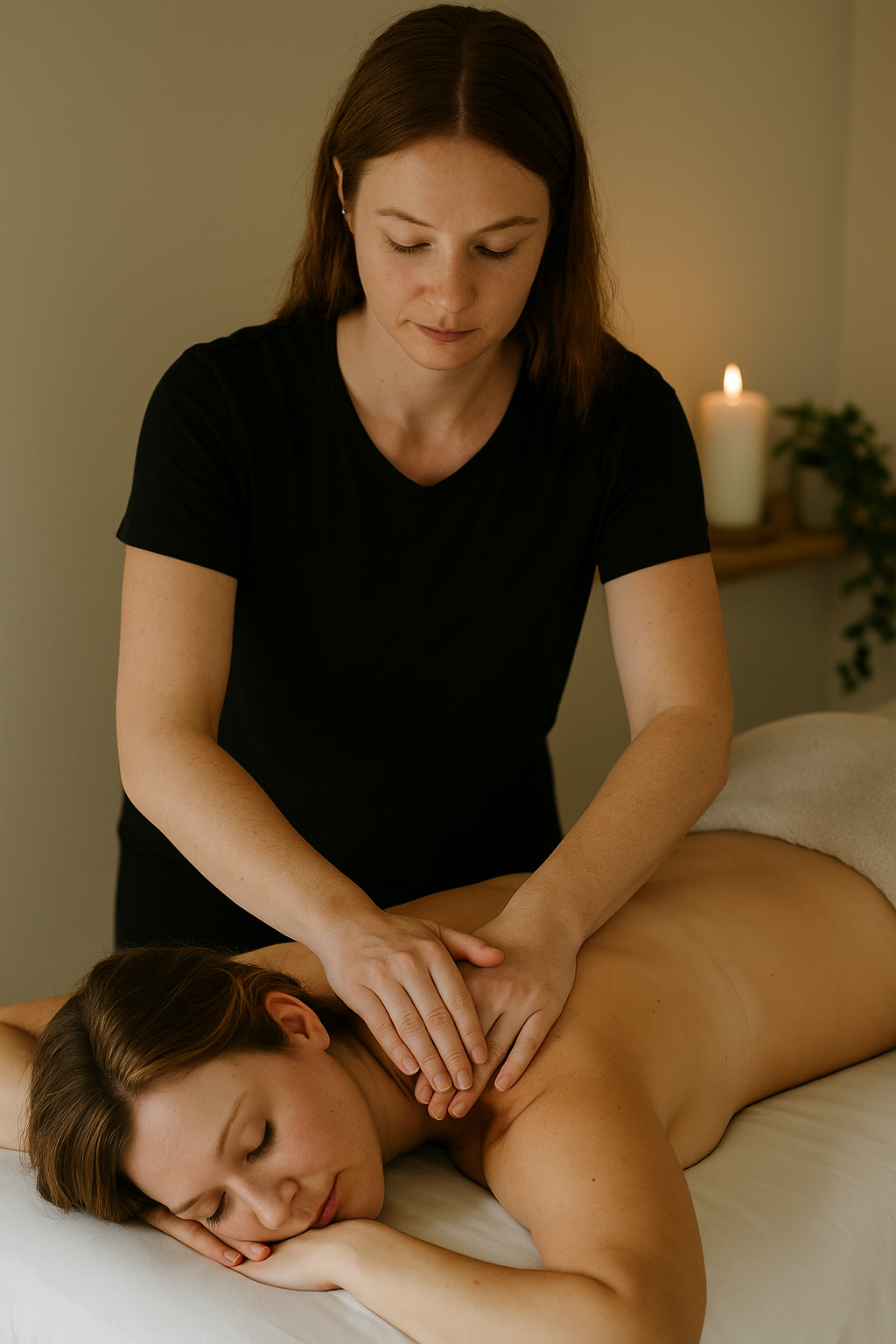
In Australia’s regional towns, where long distances often separate people from health professionals—and each other—the act of safe, supportive touch may play a more vital role in wellbeing than many realise. As mental health becomes a growing concern across the country, massage therapy is quietly emerging as a powerful complementary support. At the heart of this movement is a group of practitioners with a shared goal: to help people reconnect with their bodies, reduce stress, and feel safe again. This is how our team is doing just that—one session at a time.
The Science Behind Touch and Its Impact on Mental Health
Touch isn’t just comforting; it’s chemical. Studies have shown that therapeutic touch can significantly reduce cortisol (the stress hormone), while increasing serotonin and dopamine—chemicals associated with happiness and calm. Unlike casual physical contact, intentional and trauma-informed massage engages the parasympathetic nervous system, helping to shift the body out of fight-or-flight mode.
In places where mental health resources may be limited or overburdened, touch therapy provides a non-verbal, deeply somatic path to calm. For people who don’t feel ready to talk, or simply don’t know where to begin, massage therapy can be a gentle and accessible starting point.
A recent article on Namoinews explored the growing need for mental health awareness across regional areas, highlighting the gaps in access and support. This is where touch-based approaches are quietly filling in the cracks—providing relief without requiring words.
Our Team’s Approach: Grounded, Safe, and Individual
Every member of our team understands that physical treatment is emotional, too. Massage isn't just about knots and muscles—it’s about permission, trust, and presence. That’s why trauma-awareness and client-led care are foundational to how our team works. Whether the session is for stress, pain, or simple human connection, the practitioner always meets the client where they’re at.
Rather than assuming a “one-size-fits-all” routine, sessions are responsive. The person’s comfort level, preferences, physical condition, and emotional state all shape the experience. It’s a form of care that’s quiet, considered, and deeply respectful.
To understand the people behind the practice and how they bring this philosophy to life every day, Explore our team with Next Wave Therapy. Their approach to massage therapy doesn’t separate the mind from the body—it treats both as parts of the same lived experience.
Addressing the Mental Health Gap in Regional Areas
There’s a known shortage of mental health professionals in rural Australia, with long waitlists and travel times often discouraging people from seeking help at all. In these communities, massage therapy isn’t positioned as a replacement for clinical care—but it may serve as a first or ongoing line of support.
Consider the experience of a local aged care worker facing burnout after COVID-related pressures. A weekly massage appointment offered a space to exhale, to be looked after, and to process stress physically. No medical forms. No questions. Just care.
As highlighted in this recent Namoinews feature on burnout in rural workplaces, many Australians outside metro areas carry unspoken stress. Our team recognises that emotional strain is stored in the body, and skilled touch helps release it in a way that feels empowering—not invasive.
Who Finds Relief Through Therapeutic Touch?
People who seek out massage therapy for mental wellbeing come from all walks of life. Some may be grieving, others managing long-term anxiety or trauma. In many cases, they are parents, teachers, carers, or healthcare workers—people who spend their days looking after others and rarely prioritise themselves.
Touch therapy also helps those who experience "touch starvation"—a real and growing issue as more people live alone or navigate disconnection in the digital age. For someone who hasn’t been hugged in weeks, a massage can be more than a treatment; it can be a lifeline.
For individuals struggling to reconnect with their bodies after stress or trauma, safe touch reintroduces a sense of grounding and physical awareness. The ripple effects of that sense of calm are often felt far beyond the massage table.
Building Safe, Respectful Spaces in Close-Knit Communities
In smaller towns and regional areas, word-of-mouth matters. Trust matters even more. Our team places a strong emphasis on creating a safe, respectful environment where every client feels seen and supported.
That means allowing people to disrobe to their comfort level, using consent-focused communication, and never pushing beyond someone’s emotional or physical boundaries. It also means offering continuity of care, so clients know they’re not just another appointment on the calendar.
Our team isn’t just trained in massage—they’re trained in compassion, active listening, and the unspoken language of the body. Their clients aren’t just customers. They’re community members, each with a story and a right to feel safe in their own skin.
A Complementary Path to Wellbeing—No Words Needed
In a healthcare culture that often prioritises talking therapies, touch-based care is sometimes overlooked. But our team knows the body often speaks what the mouth cannot. For many, massage therapy is a private, peaceful way to start healing—especially when more traditional services feel out of reach or emotionally exhausting.
Of course, massage isn’t a cure-all. But when delivered with skill, respect, and awareness, it may offer the clarity, calm, and regulation needed to take the next steps in a mental health journey. Sometimes, the first release is physical. From there, new forms of healing may follow.
Whether you’re dealing with high stress, caring fatigue, or emotional strain that sits quietly beneath the surface, our team is here—not with solutions, but with presence.
Final Thoughts
Massage therapy is often thought of as a luxury, but for many people—especially in regional communities—it serves as meaningful mental health support. At its best, it’s not about pampering. It’s about returning to yourself.
If you’re curious about how intentional touch could support your wellbeing. Explore our team with Next Wave Therapy. Their quiet, client-led care may be the soft start you didn’t know you needed.